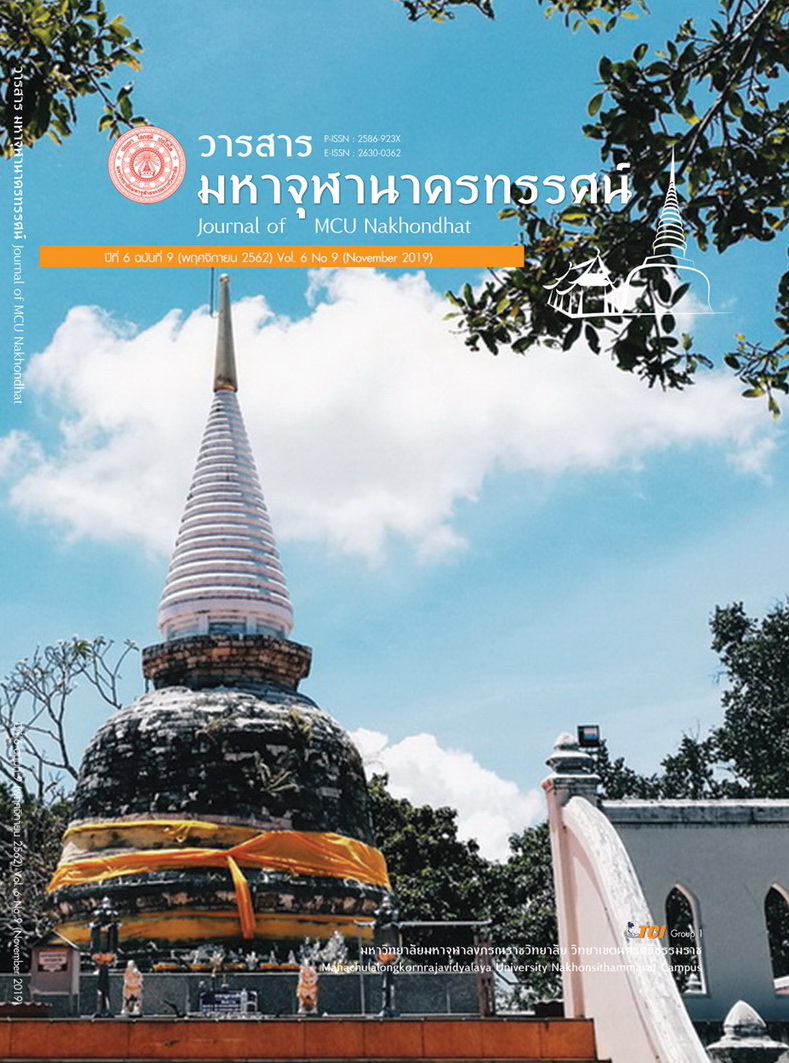CHALLENGES FACING THE PEOPLE OF TAMBON CHIANG KHAN DUE TO THE INFLUX OF TOURISTS
Main Article Content
Abstract
This research had the following objectives: 1) To study the impact of tourism in Chiang Khan District due to the increased flow of tourists into the district; 2) To study the adaptation of the local population to the tourism impact; and 3) To study on the solution of most suitable tourism management for the community regarding on the Qualitative Research and In-Depth Interview. Those interviewees given the main information’s were specifically and deliberately selected as the representatives of each category. The categories are classified into 4 groups of 30 interviewees. 1) 9 local people living in the areas 2) 10 residence and hotel entrepreneurs 3) 10 restaurant and souvenir entrepreneurs 4) 1 leader of the community. The focused and researched areas are the Chiang Khan Walking Street and Kaeng Kood Khoo area.
This study had the following findings:
- Impact of tourism on daily life: Everyone in the community has an occupation in the locality. They are proud of the local, traditional culture. They view tourism as a source of additional revenue for the community. The eco-tourism encourages the local population to value the environment more highly and help to preserve and maintain it. However, the increasing volume of tourists is causing problems of crowding. Some of the traditional wood houses are being replaced by lodging to cater to the tourists. There is an increased amount of waste produced in catering to the tourists. In some cases, the tourists themselves are causing degradation to the environment.
- Adaptation of the local population: Every local resident has made some constructive adaptations to the increase in tourists. They are more flexible in residential, services, social, and culture. They are also well acknowledged on each current situation. They fully provide the tourists on variety of residences, souvenirs, and restaurants specifically aimed to support the high-rise of tourists.
3. Guidelines for tourism management: The government agencies are working with the local residents to define the direction they would like to see tourism develop. This is a participatory decision-making process of all the stakeholders. There are plans to promote and support tourism and control growth of tourism within defined limits. There are community rules and regulations for resource management to serve tourists. The relevant government agencies should continue to monitor the situation and inform all stakeholders of the vision and guidelines for sustainable tourism management.
Article Details
References
ณัฏฐพัชร มณีโรจน์. (2560). การจัดการท่องเที่ยวโดยชุมชน. กรุงเทพมหานคร: คณะบริหารธุรกิจเพื่อสังคม มหาวิทยาลัยศรีนครินทรวิโรฒ.
ธนกฤต สังข์เฉย. (2550). อุตสาหกรรมการท่องเที่ยวและการบริการ. นครปฐม: มหาวิทยาลัยศิลปากร วิทยาเขตพระราชวังสนามจันทร์.
บุญเลิศ จิตตั้งวัฒนา . (2548). อุตสาหกรรมการท่องเที่ยว ธุรกิจที่ไม่มีวันตายของประเทศไทย. กรุงเทพมหานคร: ซี.พี.บุ๊ค สแตนดาร์ด.
สุธาสินี สุธรรมมา. (2558). ผลกระทบจากการท่องเที่ยวที่ส่งผลต่อรูปแบบชุมชนเมืองเชียงคาน อำเภอเชียงคาน จังหวัดเลย. ใน วิทยานิพนธ์สถาปัตยกรรมศาสตรมหาบัณฑิต สาขาวิชาการออกแบบชุมชนเมือง. มหาวิทยาลัยศิลปากร.
สุวิชชา พักกระสา. (2552). ยุทธศาสตร์การปรับตัวของชาวบ้านเพื่อการดำรงตนอยู่ในพื้นที่ท่องเที่ยว : กรณีศึกษาหมู่บ้านแม่เย็น ตำบลแม่ฮี้ อำเภอปาย จังหวัดแม่ฮ่องสอน. ใน วิทยานิพนธ์ศิลปมหาบัณฑิต สาขาวิชาการพัฒนาสังคม. มหาวิทยาลัยเชียงใหม่.
อภิชาติ ดำดี. (2552). กระบวนทัศน์ใหม่ในการพัฒนาท้องถิ่น. เรียกใช้เมื่อ 5 มิถุนายน 2552 จาก https://oknation.nationtv.tv/blog/damdee/2009/06/05/entry-1


